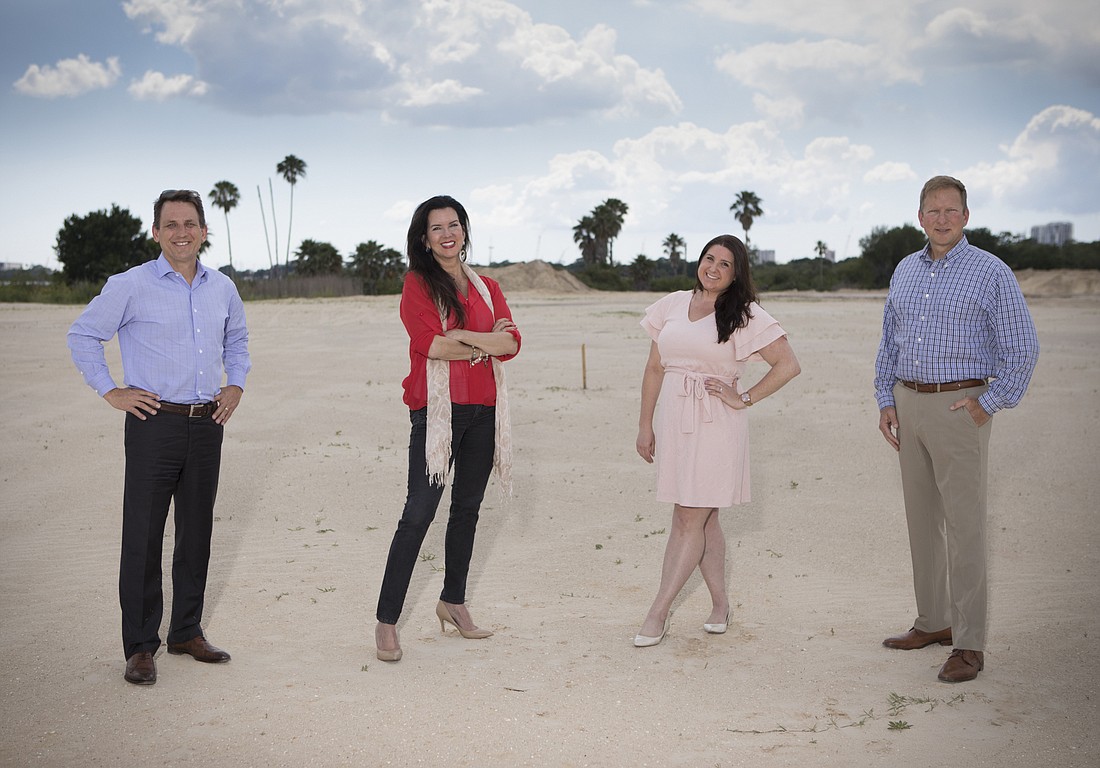- July 26, 2024
-
-
Loading

Loading

Gerard Keating wants to help online and legacy retailers and others go the last mile.
The Naples-based developer believes so-called “last mile delivery” — a trend that has merchants of every stripe focused on getting goods in consumers’ hands in the shortest period of time — is here to stay, and he’s building to meet the ever-increasing demand.
The CEO of Keating Resources’ latest distribution center, a 180,000-square-foot project on 16 acres at 101 S. 34th St. in Tampa, is intended to meet the needs of e-commerce purveyors such as Amazon who are pledging to whittle down the time between online ordering and customer receipt to a single day.
“It’s the Amazon effect,” says Keating, who has done a handful of value-add industrial projects in and around Tampa since 2015 and found the Tampa Fulfillment Center land while scanning Google Earth maps on his computer. “Fulfillment companies need to be, and want to be, ever closer to their customers.”
“This site is right in the middle of Tampa, a 45-minute drive to 90% of the population, which is amazing,” he adds of the project, which is about three miles east of downtown Tampa and from which the city’s skyline of office towers is clearly visible.
From Tampa to Naples, developers are scouting out once overlooked sites for places to build or convert “last mile” distribution facilities, so called because tenants are able to fulfill customer purchases by covering relatively short distances.
The trend is expected to have significant repercussions for older industrial real estate, especially, by breathing new life into buildings once considered too old, too small, too functionally obsolete or too plain vanilla to operate as modern warehouses.
That’s because increasingly industrial space is becoming a substantial part of the overall supply chain for many retailers as e-commerce and online shopping gain traction in the mainstream.
Keating’s Tampa Fulfillment Center, for instance, has been specially designed to accommodate logistics firms and help aid supply chain management, says Cushman & Wakefield Director Julia Rettig, who together with John Jackson and Jessica Mizrahi is marketing the project.
Tampa Fulfillment’s flow-through design and ramp options, for instance, will allow tenants to drive into the building, load up vehicles and exit quickly to cut down on shipping time.
Just as importantly for distributors, the $18 million project is located almost adjacent to the Leroy Selmon Expressway, with access to Interstate 275, Interstate 4 and Interstate 75 minutes away.
“There are a lot of warehouses out there, but there are also a lot of dysfunctional warehouses out there, too.” Gerard Keating, Keating Resources
Last-mile distribution isn’t limited to major urban areas like Tampa, either, though many of the logistics channels tend to center, naturally, around major population centers.
In the Interstate 4 corridor, between Tampa and Orlando, a number of industrial developers are building or retrofitting projects around the concept of last-mile delivery and incorporating warehousing into supply-chain management.
McCraney Property Co. last November, for one, landed a 207,676-square-foot deal with UPS for its 27 Logistics Park in Davenport, Polk County.
There, UPS took down the entire speculatively developed project for its own last-mile purposes.
In Fort Myers, Maryland-based Knott Realty Group is developing a 27-acre tract known as Meridian Center with more than 200,000 square feet of industrial space aimed at last milers.
Elsewhere in Lee County, an Iowa-based investment firm has begun work on the first buildings in a planned 1.87 million-square-foot industrial park on land adjacent to the Southwest Florida International Airport, where each building will measure about 106,000 square feet.
Premier Airport Park is being specially designed to accommodate last-mile distributors who wish to deliver in the region, says Dan Miller, an executive managing director of land and industrial services with commercial real estate brokerage Colliers International Southwest Florida, who is marketing the 225-acre business park.
Older projects have benefitted from the trend as well.
In Sarasota, U.S. Postal Service and Amazon vendor Milum Inc. last fall purchased a 6,500-square-foot building on 3.5 acres that had once been used by a towing company to meet its last-mile needs.
And in Fort Myers, Amazon leased 60,000 square feet — the largest new industrial deal of 2018 in the city — for a last-mile hub in the Airport Woods Commerce Center.
But not every older, or even well located, industrial property can be rehabilitated for last-mile shipping.
One major challenge centers around parking, for both cars and tractor trailers, and the need for adequate land for both associated with last-mile logistics.
“The majority of the buildings built in recent decades were meant to maximize building area and not the ability to park vehicles,” says Ian Black Real Estate Partner Nick DeVito, who negotiated the Milum deal last year.
Milum, in fact, was drawn to its 3950 N. Osprey Ave. property because the 3.5 acres contained adequate parking.
Knott Realty, too, is designing Meridian with “extra parking” for fleet trucks and the like.
“There are a lot of warehouses out there, but there are also a lot of dysfunctional warehouses out there, too,” says Keating.
At Tampa Fulfillment Center, Keating is baking in a pair of parking fields that can be modified for specific tenants’ needs.
“One of the issues that traditional industrial development has grappled with is adequate parking and also with the fact that cars tend to back up,” says Jackson, a director of industrial and land brokerage with Cushman & Wakefield.
“The way Tampa Fulfillment Center has been designed, there are separate areas for ingress and egress, so vehicles don’t have to stack up or wait while others load up or enter or exit,” says Jackson. “That’s going to make a big difference for users.”